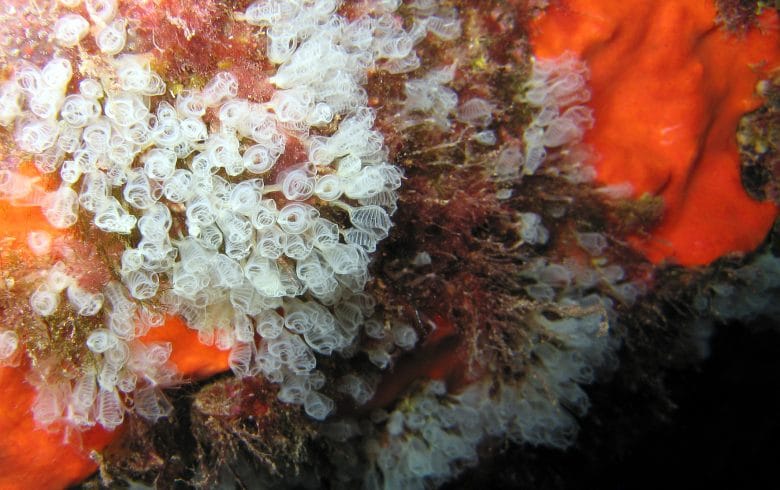
Did you know ?
Several other species of sea squirt can be found in the Mediterranean but this one is the smallest.
The delicate midget sea squirt lives in bunches held together by a thin stolon, making them look like a colony when in fact each individual is independent. Shaped like a small, transparent club, they are white or yellowish and less than 1cm high. They are transparent, making it easy to spot the 6 to 8 opaque pharyngeal slits that filter water to feed them with plankton. They are found on rocky bottoms from the surface down to 50m in the Western Mediterranean and in nearby Atlantic waters.
Phylum: Tunicata
Class: Ascidiacea
Order: Aplousobranchia
Family: Clavelinidae
Scientific name: Pycnoclavella nana
French: Claveline naine
Spanish: Clavelina
Italian: Clavelina
German: Swerg Seescheide






















